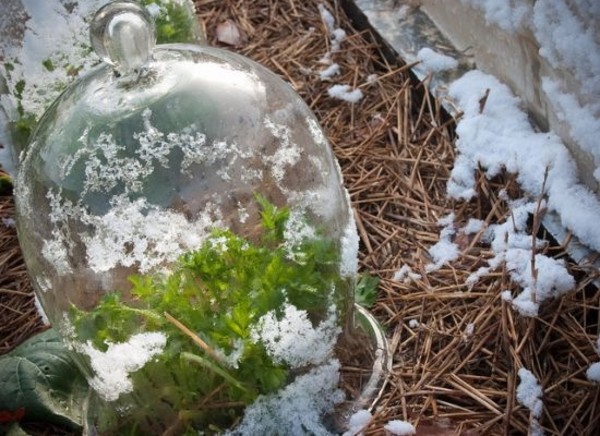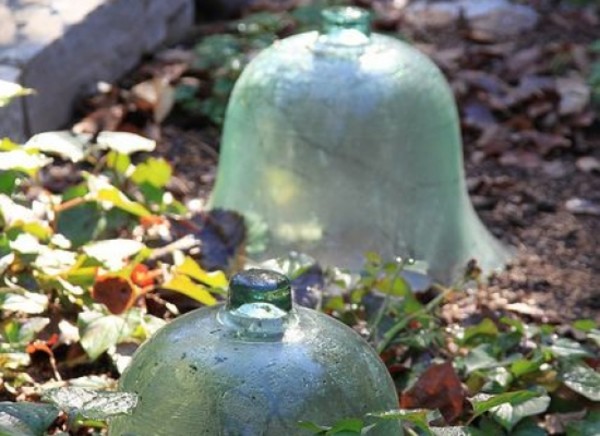What the Herb Is a Garden Cloche?

image: MizGingerSnaps

Whether you’re a newbie or an expert gardener, nothing makes gardeners feel as glum as finding their recently sprouted plants annihilated by a bout of bad weather. What’s a hopeful organic food and flower cultivator to do?
Use a cloche, of course! Used by savvy gardeners to cover and protect their fragile seedlings, a cloche, which comes in various forms, can save you from some early gardening heartache.
A Bit of History
image: thegardenbuzz

Traditionally, glass bell-shaped jars were used in Europe to cover delicate plants from the abrupt changes of Mother Nature. The cloche even takes its name from the French word for “bell.”
Woven baskets, another type of cloche, were also used in Europe to protect young plants from harsh weather. Their woven strands worked double-duty to provide shade for lettuce and spinach during hot summer months and also as handy carry-alls for harvesting cultivated goodies.
Current Cloches
Today, the definition of a “cloche” has expanded to mean anything from the traditional glass domes to ceramic versions to large raised structures covered in plastic—basically anything that serves as a mini greenhouse.
In areas where weather can be finicky, tender plants like herbs can benefit from nightly covering by cloches to wrap them in warm air and protect them from chill and frost. No matter your location, they’re also great to use anywhere and anytime as a line of defense from hungry critters intent on snacking on your lovingly nurtured crops.
Make Your Own
While rows of glass domes covering your young plants would create quite the whimsical organic garden, it also might get a tad expensive. You could use hurricanes—those glass domes traditionally used to display candles— for a similar look and technique, but you likely don’t have enough laying around your home to cover all of your less-hardy plants.
Don’t worry. You savvy repurposers and recyclers likely already have the makings on hand to craft your own do-it-yourself cloches.
One option is to use a simple woven basket or a bowl to cover the baby plants in your spring garden from unpredictable weather. A basket will likely work better than a bowl, as it allows for ventilation so the plant doesn’t get too hot.
Although you may not be keen on plastic, transforming plastic juice, soda and water bottles into cloches is a handy reuse method. Simply cut off the bottom of the bottle and place it on top of your newly transferred seedling. Remove the cap so the plant can ventilate. Once your plants start growin’ like weeds, move your handmade cloches around to cover newer seedlings.
Follow Kirsten on Twitter @kirsten_hudson

